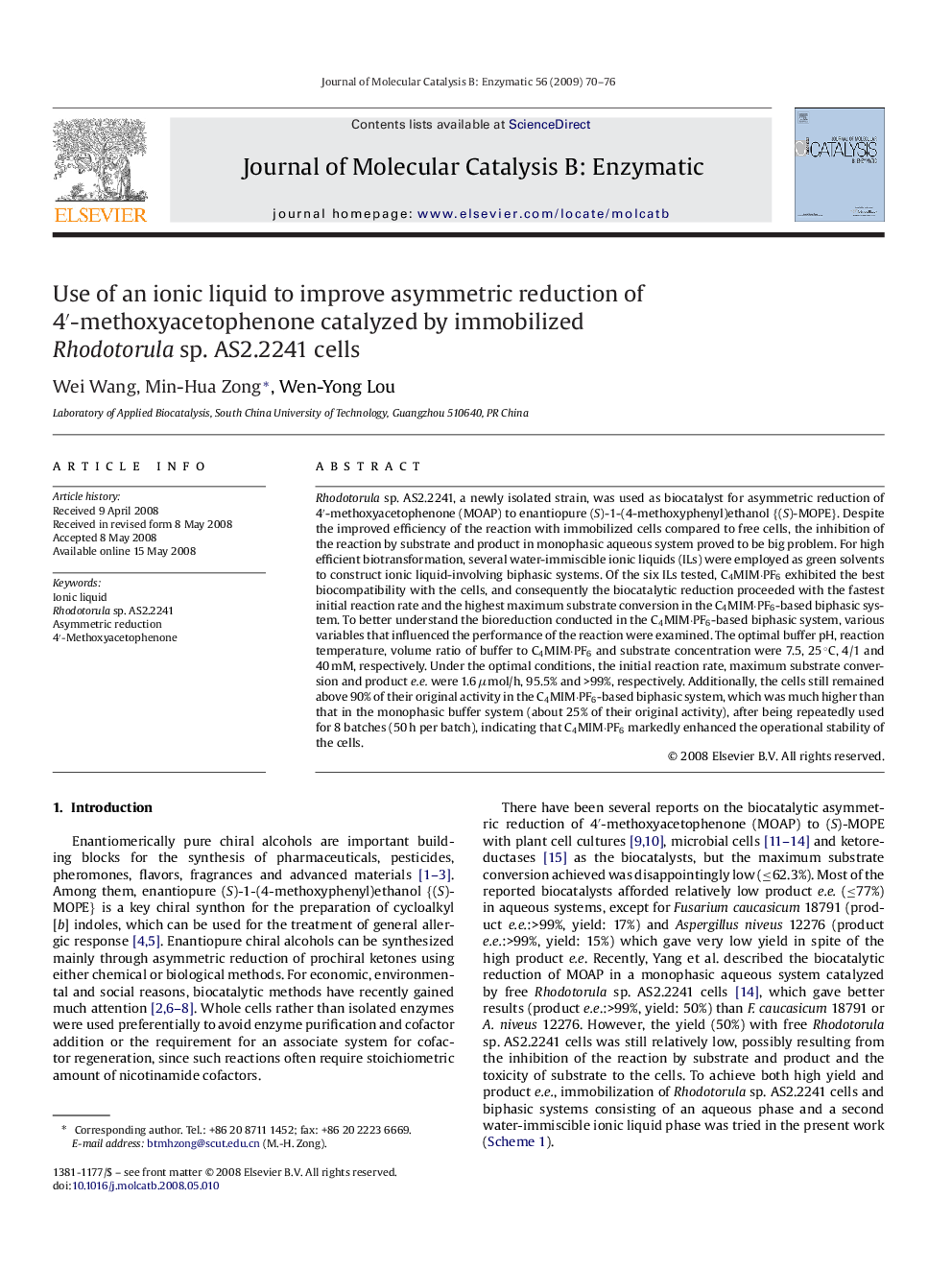| Article ID | Journal | Published Year | Pages | File Type |
|---|---|---|---|---|
| 70730 | Journal of Molecular Catalysis B: Enzymatic | 2009 | 7 Pages |
Rhodotorula sp. AS2.2241, a newly isolated strain, was used as biocatalyst for asymmetric reduction of 4′-methoxyacetophenone (MOAP) to enantiopure (S)-1-(4-methoxyphenyl)ethanol {(S)-MOPE}. Despite the improved efficiency of the reaction with immobilized cells compared to free cells, the inhibition of the reaction by substrate and product in monophasic aqueous system proved to be big problem. For high efficient biotransformation, several water-immiscible ionic liquids (ILs) were employed as green solvents to construct ionic liquid-involving biphasic systems. Of the six ILs tested, C4MIM·PF6 exhibited the best biocompatibility with the cells, and consequently the biocatalytic reduction proceeded with the fastest initial reaction rate and the highest maximum substrate conversion in the C4MIM·PF6-based biphasic system. To better understand the bioreduction conducted in the C4MIM·PF6-based biphasic system, various variables that influenced the performance of the reaction were examined. The optimal buffer pH, reaction temperature, volume ratio of buffer to C4MIM·PF6 and substrate concentration were 7.5, 25 °C, 4/1 and 40 mM, respectively. Under the optimal conditions, the initial reaction rate, maximum substrate conversion and product e.e. were 1.6 μmol/h, 95.5% and >99%, respectively. Additionally, the cells still remained above 90% of their original activity in the C4MIM·PF6-based biphasic system, which was much higher than that in the monophasic buffer system (about 25% of their original activity), after being repeatedly used for 8 batches (50 h per batch), indicating that C4MIM·PF6 markedly enhanced the operational stability of the cells.
